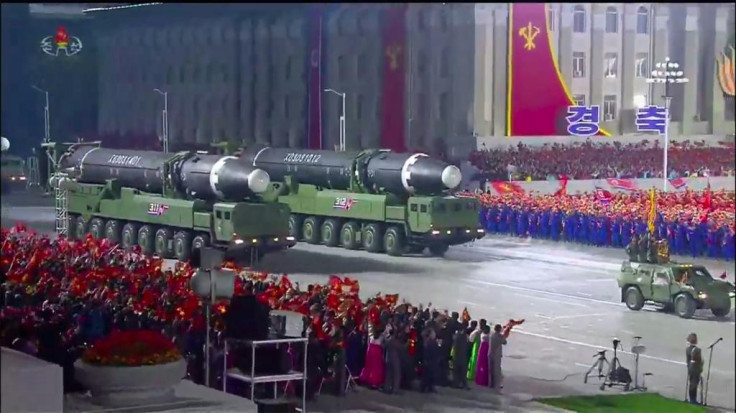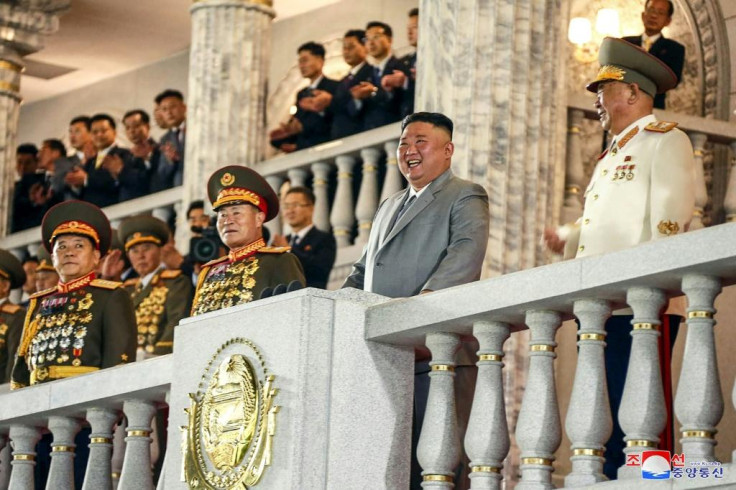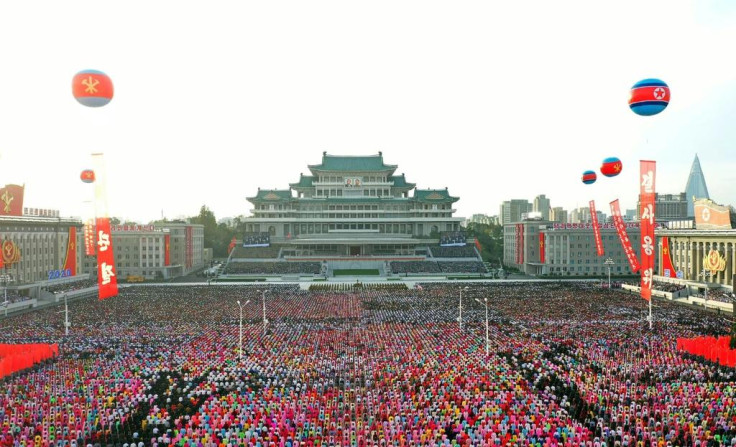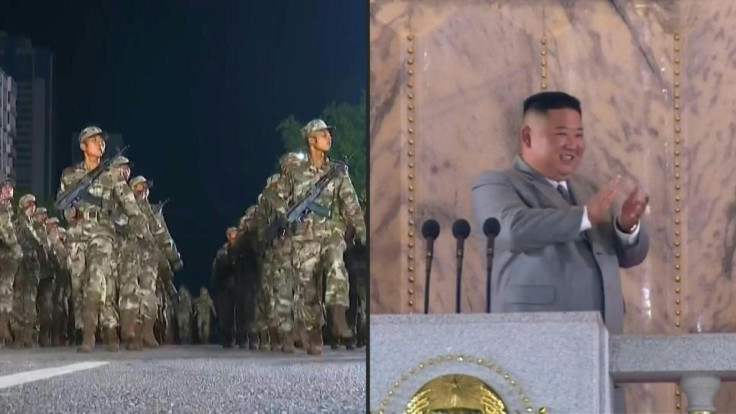Kim throws down gauntlet with huge new ICBM: analysts
Kim was sending the US a message that the North's capabilities were improving.
The gargantuan new missile North Korea put on show at a military parade is an explicit threat to US defences and an implicit challenge to both the current and next American president, analysts say, warning Pyongyang could test the weapon next year.
Leader Kim Jong Un watched the intercontinental ballistic missile (ICBM) roll through Kim Il Sung square -- named after his grandfather -- in Pyongyang at the climax of an unprecedented night-time parade on Saturday.

Analysts concurred that it was the largest road-mobile, liquid-fuelled missile anywhere in the world, and was highly likely to be designed to carry multiple warheads in independent re-entry vehicles (MIRVs).
Jeffrey Lewis of the Middlebury Institute of International Studies said it was "clearly aimed at overwhelming the US missile defense system in Alaska".

If the ICBM carried three or four warheads, he added on Twitter, the US would need to spend around $1 billion on 12-16 interceptors to defend against each missile.
"At that cost, I am pretty sure North Korea can add warheads faster than we can add interceptors."
The missile was estimated at 24 metres long and 2.5 metres in diameter, which specialist Markus Schiller said was big enough to carry 100 tonnes of fuel, which would take hours to load.

It was so big and heavy that it was practically unusable, he added: "You can't move this thing fuelled, and you can't fill it at the launch site.
"This thing makes absolutely no sense at all, except for threat equation games, like sending the message of 'we now have a mobile ICBM with MIRVs, be very afraid'."

North Korea watchers regularly caution that the devices Pyongyang puts on show at its parades may be mock-ups or models, and there is no proof they work until they are tested.
But the missile was carried on an enormous and previously unseen 11-axle transporter-erector-launcher, far larger than the eight-axle Chinese-made vehicles the North has employed so far.
"The truck may be a scarier story than the missile," said Melissa Hanham of the Open Nuclear Network.

"If the DPRK is indigenously producing their own chassis, then there is less of a constraint on the number of ICBMs they can launch."
Shortly before being inaugurated in 2017, Donald Trump tweeted that North Korea developing a weapon capable of reaching parts of the US "won't happen!".
He spent the first year of his presidency -- which saw the North launch an ICBM with the range to do exactly that -- in an escalating war of words with Kim before an extraordinary diplomatic bromance developed between them.
But nuclear negotiations have been deadlocked since the collapse of their Hanoi summit early last year over sanctions relief and what the North would be willing to give up in return.
The ICBM was proof that the North had continued to develop its arsenal throughout the diplomatic process, analysts said, and gave Pyongyang greater heft to demand a return to the negotiating table.
"Like it or not North Korea is a nuclear power and is probably the third nuclear power which is capable of striking American cities, third after Russia and China," Andrei Lankov of Korea Risk Group told AFP.
Kim was sending the US a message that the North's capabilities were improving and that "if you don't want to make a deal now, sometime later you will have to make a deal which will be worse for you, the international community", he added.
Trump has made much of Kim's promise not to carry out any further ICBM or nuclear tests, and Shin Beom-chul of the Korea Research Institute for National Strategy said that by displaying the missile rather than launching it, Pyongyang had stopped short of crossing his red lines.
"But it also signals that North Korea could carry out a launch if Trump is re-elected and ignores the North Korean issue," he said, adding: "If Biden is elected and he doesn't listen to North Korea, it will carry out a launch."
Copyright AFP. All rights reserved.
This article is copyrighted by International Business Times, the business news leader



















